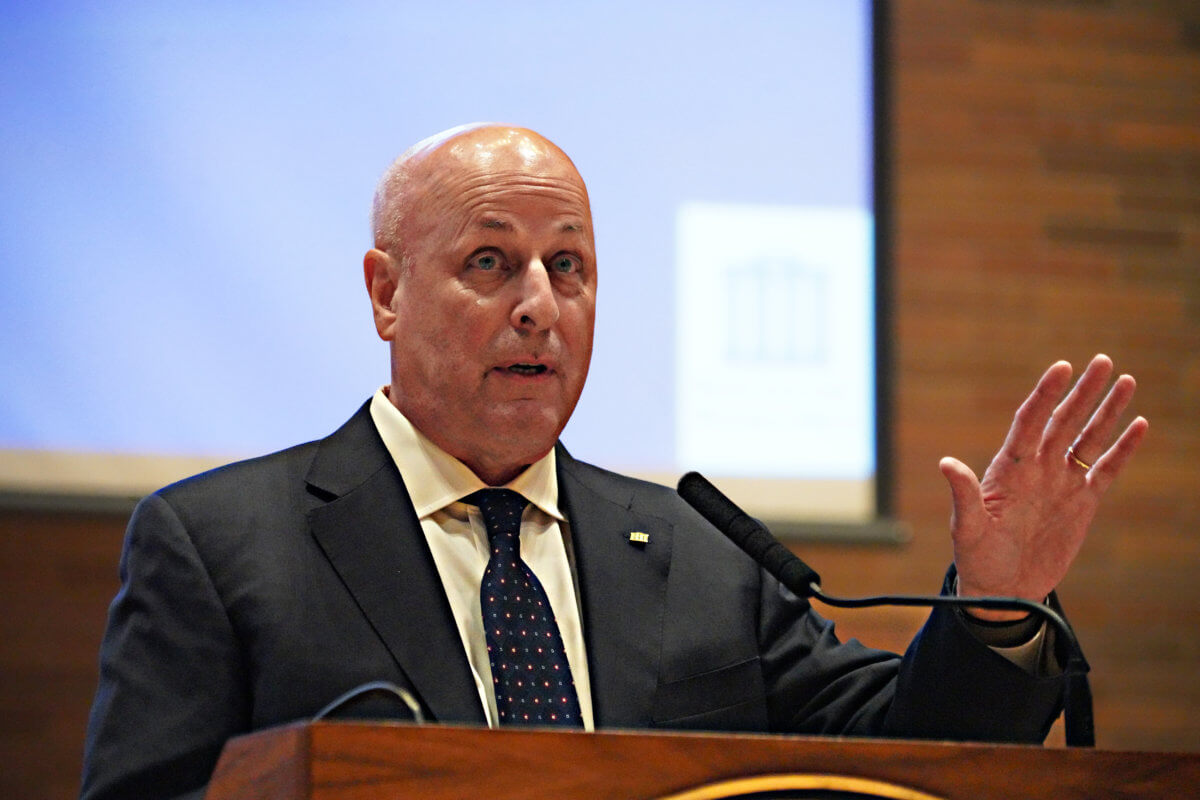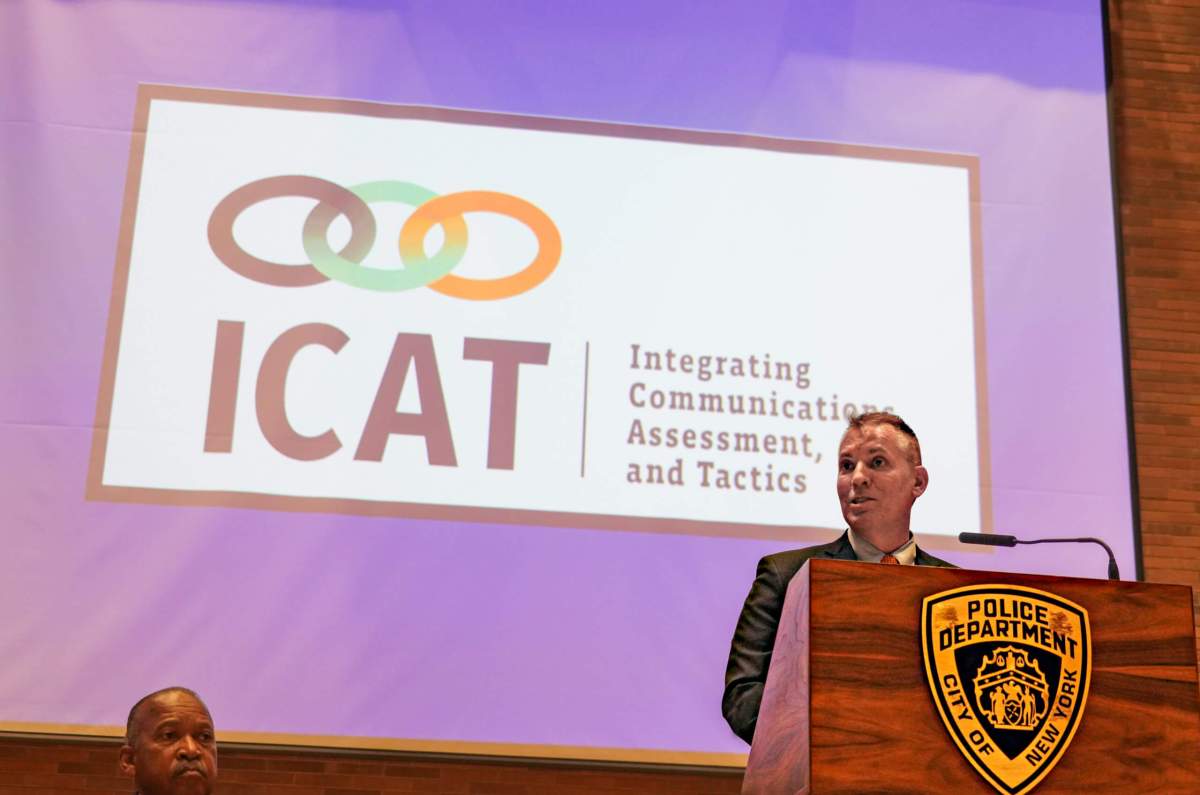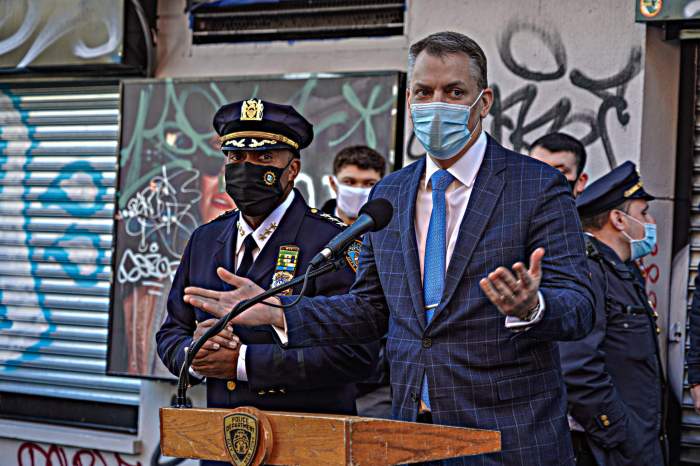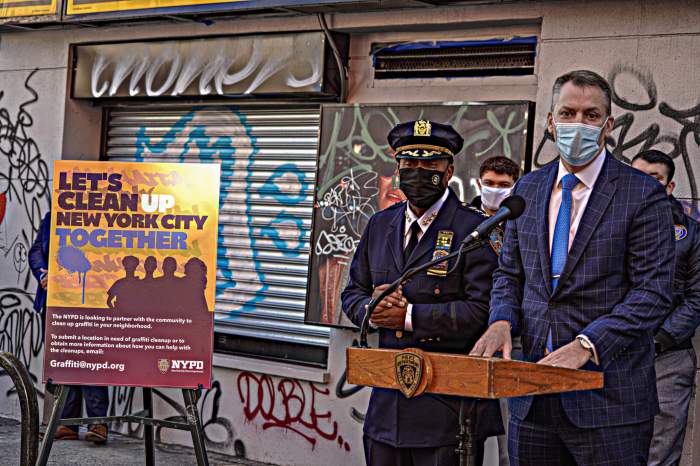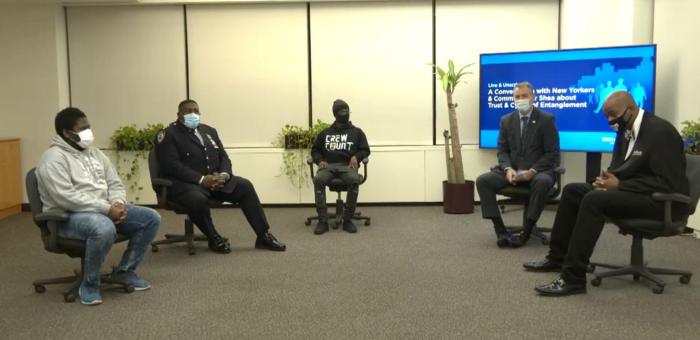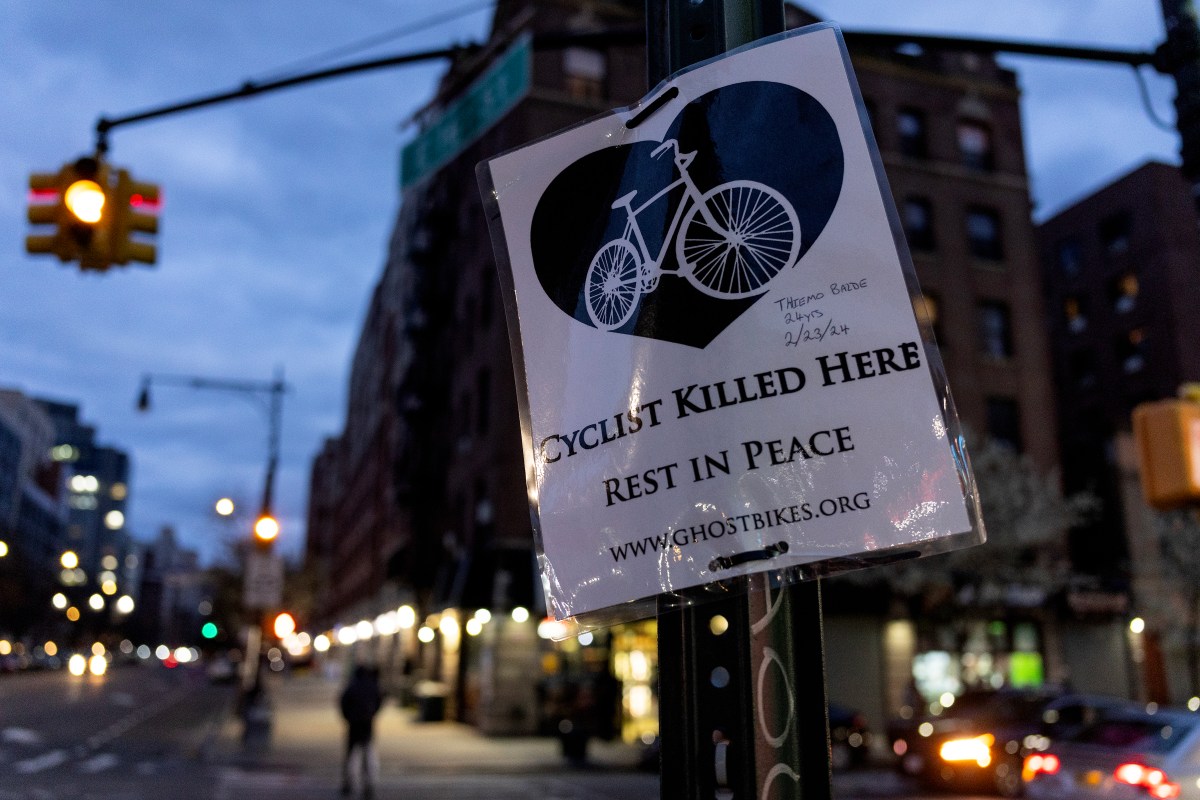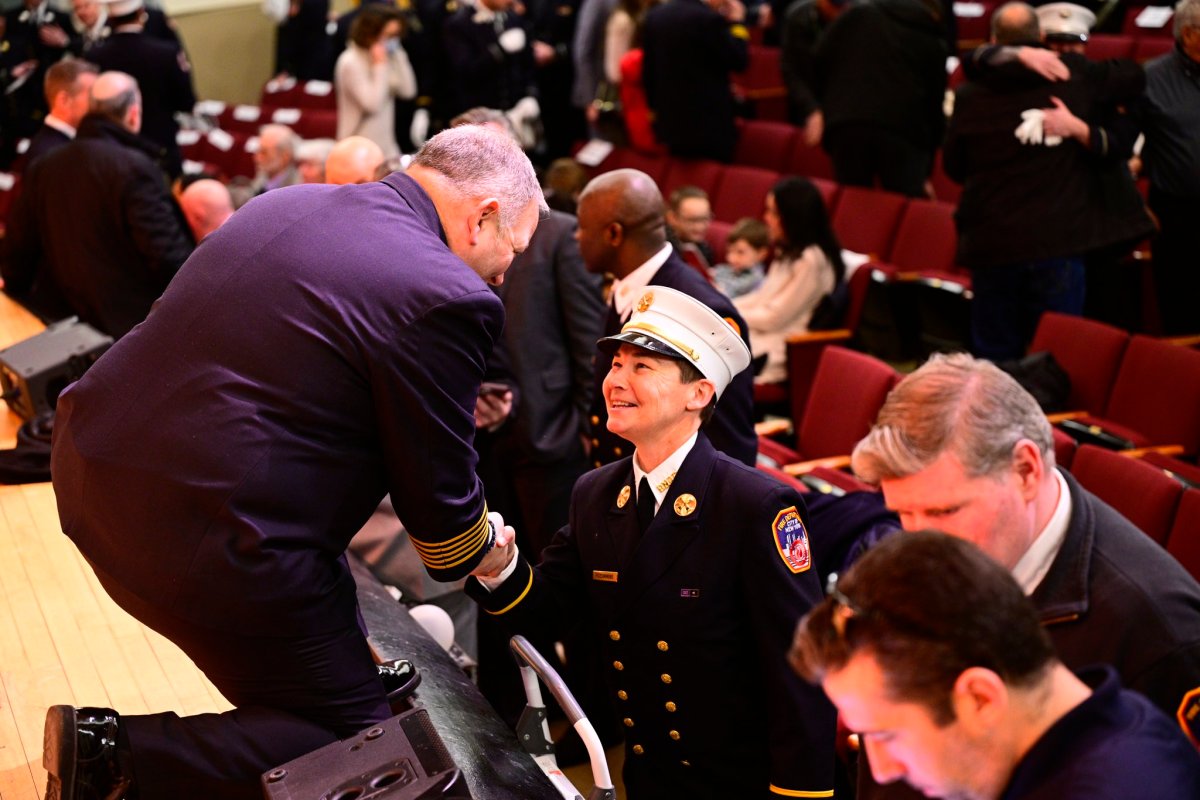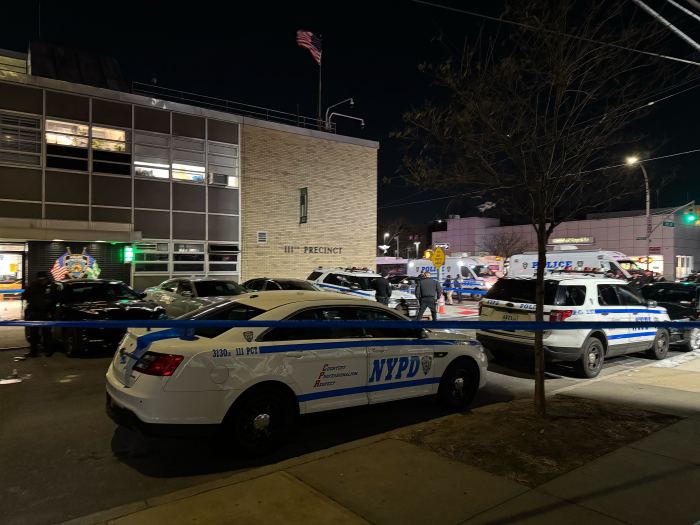On Wednesday, NYPD officials unveiled new training methods set to be implemented in hopes of de-escalating potentially deadly encounters.
The Integrating Communications, Assessment, and Tactics training program dubbed ICAT aims to provide officers with advanced empathy practices and other protocols in order to help defuse public encounters without using force. However, officials emphasized this is not a replacement for current practices, merely intended to act as an additional tool within their arsenal.
“Today we are announcing that the NYPD has embraced even more high-level training for our officers, it’s known as ICAT,” Commissioner Shea said at a press conference at One Police Plaza, adding, “ICAT training enhances our efforts to always try to resolve potential volatile situations, hopefully without any use of force. In instances where force, unfortunately, becomes necessary, we focus on using the minimum amount of force possible to realize a successful outcome and, just as importantly, a safe outcome.”
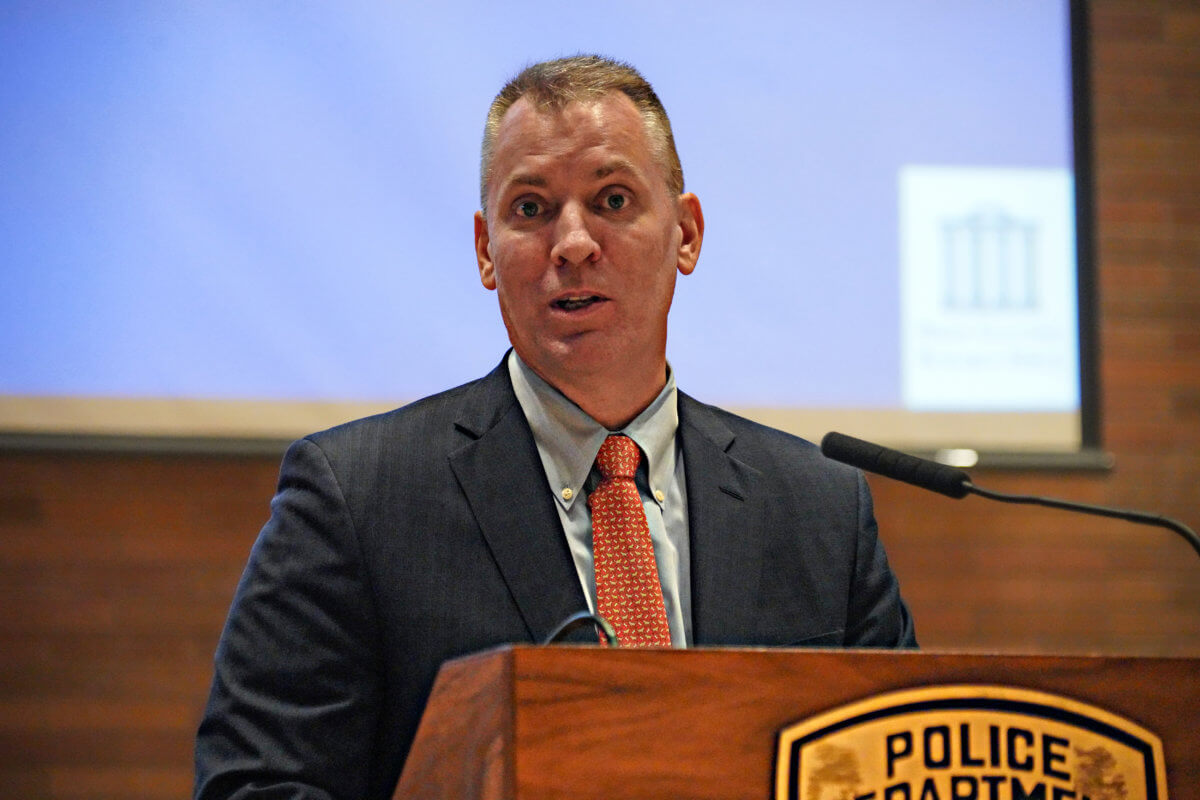
Executive Director of the Police Executive Research Forum Chuck Wexler cited several instances in which mentally unstable individuals choose to end their lives via the police department as a need for this new, advanced regulation that allows officers to take as long as they need with a given case and promotes active, respectful dialogs while also creating space for the safety of everyone involved. Wexler spoke of officers retrieving empty firearms used to simply incite a suicide at the hands of law enforcement.
“I thought to myself, how many situations like that, whether it is a gun with no bullets, it’s a toy gun, we thought he had a gun, all of those situations but that suicide by cop has been the accepted practice in American policing,” Wexler said, adding, “I can tell you, in so many words, I think this is going to change policing in the country and I’m honored that the NYPD has taken it on. He went on to explain the evidence-based facts that underscore the results from this form of training.
A video of a man brandishing a knife asking officers to shoot him was showcased as an example of this but thanks to a responding officer who took time to emphasize with him while also creating a safe distance between himself and the individual resulted in the man relinquishing the weapon without incident.
“What the NYPD is doing is taking what they do very well to the next level,” Wexler said, describing how this method teaches officers to think quickly, critically, and if the decisions being made are moral.
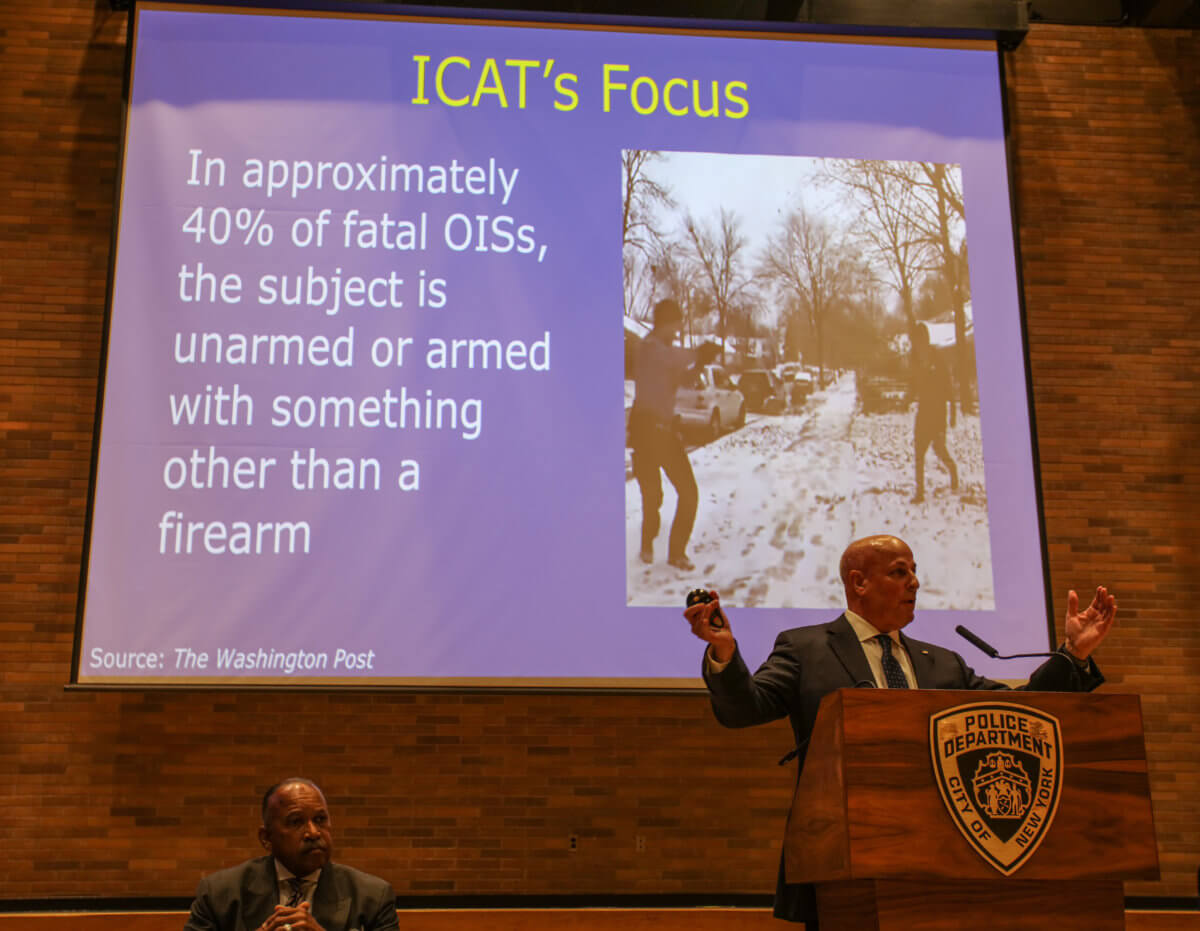
Using a PowerPoint to highlight his statement, Wexler shared estimates that about 40% of officer-involved shootings do not involve a perpetrator with a firearm. He cited a study by the Washington Post that found that out of 1,000 incidents, 60% involved officers using guns. Many of these situations revolved around unloaded guns, knives, rocks, planks of wood, and other weapons—suicide by cop scenarios.
Top officials within the department including Chief of Department Rodney Harrison and First Deputy Commissioner Benjamin Tucker say they believe advanced methods like ICAT will not only help save the lives of both the public and officers, but it will also make the NYPD a shining example for the rest of the country. The conference stressed that it may take several hours or even days in order to have a positive result.
“There is nothing wrong with slowing it down, taking extra time. One of the bullet points on the slide was we don’t have all day, well we do have all day and we have days if that’s what it takes to get a successful outcome and it is getting that into the minds of the officers and teaching them to use these skills effectively,” Chief of Training Kenneth Corey said.
